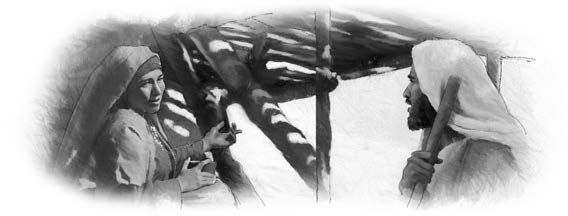For most of his life, Rob Schetky, a retired U.S. Navy officer, had struggled with the Bible and its meaning.
Once an agnostic, Rob was seeking God’s will, but the Sabbath posed a problem. He fumed when people skipped church and engaged in everyday activities on Sunday. He asked, “Why are you playing golf on Sunday?” But inside he wondered, Where in the Bible did God change the Sabbath?
Rob stopped going to church. He was looking for a new church in Fairbanks, in the U.S. state of Alaska, when an unsolicited book arrived in his post office mailbox. “That’s an interesting name,” he thought, examining the book. “I wonder what The Great Controversy is.”
Leaving the post office, he passed a stack of Great Controversy books that other people had discarded on a counter. It had been a mass mailing.
At home, Rob became engrossed in the book. He grew excited as he read how humans, not God, had changed the Sabbath day of worship. Wow! he thought. Someone is telling the history of the church in a very logical way.
Contacting a friend, he said, “I’ve found a great history of Christianity. It’s called The Great Controversy.” Later, the friend called back. “You’ve got to get away,” he said. “That’s the Seventh-day Adventist Church. They’re a cult!”
Rob was surprised. He hadn’t noticed the name of the book’s author, Ellen White, and didn’t know that she had cofounded the Adventist Church. “No, they are not a cult,” he said. “They just believe in the Word of God.”
After the conversation, Rob wondered if Adventists worshiped in Fairbanks. Looking online, he found a church located only a 10-minute drive away. On Sabbath, he grabbed his Bible and The Great Controversy and went to church. He had been reading the book for less than a month.
The first person to greet him at church was a Sabbath School teacher, Helen. She expressed surprise when she learned that he had come because of The Great Controversy. “You just destroyed my complaints,” she said.
She had been worried that the small size of the book’s text made it impossible to read. Yet Rob had already read three-fourths of the book—and he had come to church to learn more.
Today, seven years later, Rob is 70 and a church deacon. He still reads the Bible and the writings of Ellen White daily. “When I found the Seventh-day Adventist Church, I found a home, and I found truth,” he said.
Join the Adventist world church in 2024 in the mass promotion and distribution of The Great Controversy. Ask your pastor or visit greatcontroversyproject.com for more details .

